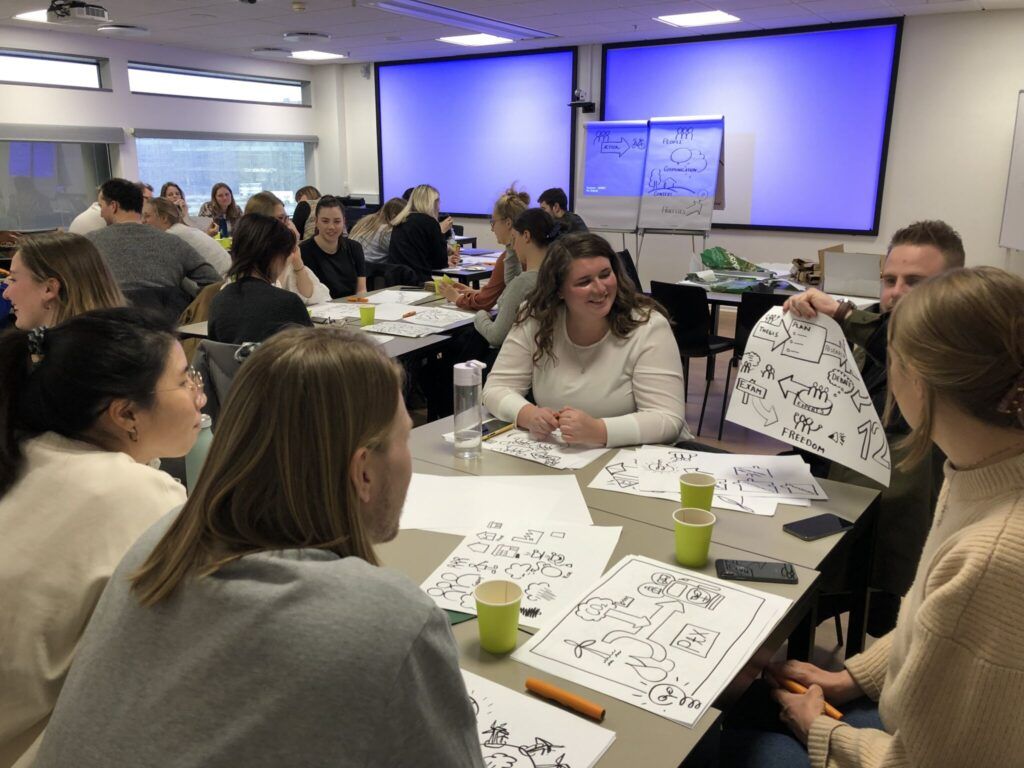Master’s students at Aalborg University learned how to draw and incorporate simple icons, symbols and processes into their presentations
With a few simple drawing techniques, the master’s students at Aalborg University, Department of Planning learned how to visualize the striking points, ideas and solution proposals from their semester projects. These skills can help create greater commitment, ownership and impact in the processes or meetings that the students participate in.
The two-day course in Graphic Facilitation was held in both Aalborg and Copenhagen by SimpleDraw and planned as workshops where students from different educations attended. The overall theme for drawings was climate and sustainability, but more specific topics as health technology, urban development, product development were also visualized among the students. And not to forget – exercises, feedback and reflection on own style of visual presentation was an important part of the course too.
”A big part of being technoantropologist has something to do with communication with and between different professional groups – here graphic illustrations can be used as a universal language” says Rie LM Petersen, student at Aalborg University, who participated in the course.
Graphic Facilitation is a great way to support your spoken pitch. It is a powerful tool that can be used to quickly understand the content, push new information into long-term memory and most importantly, inspire people to act. In fact, we all use different words to talk about similar topics, therefore graphic facilitation helps building a common language and ensure we all have the same understanding about a specific topic.
“The skills from the course also helped me structure my own thoughts in terms of my work”, says Sidse Lund Østergaard, Communications consultant, Aalborg University, who also participated in the course.
Here some extra quotes from the students:
“My favorite part of the course was the whole drawing aspect and getting to visualize your ideas and processes of your work. Hopefully, I will use it in my next job when I work in a team. I believe it will help to create an overview of the current task ahead”
“I especially liked the last assignment, where we drew the frame with, “what”, “who” “how”, I am going to use that when I explain problems later on.”

